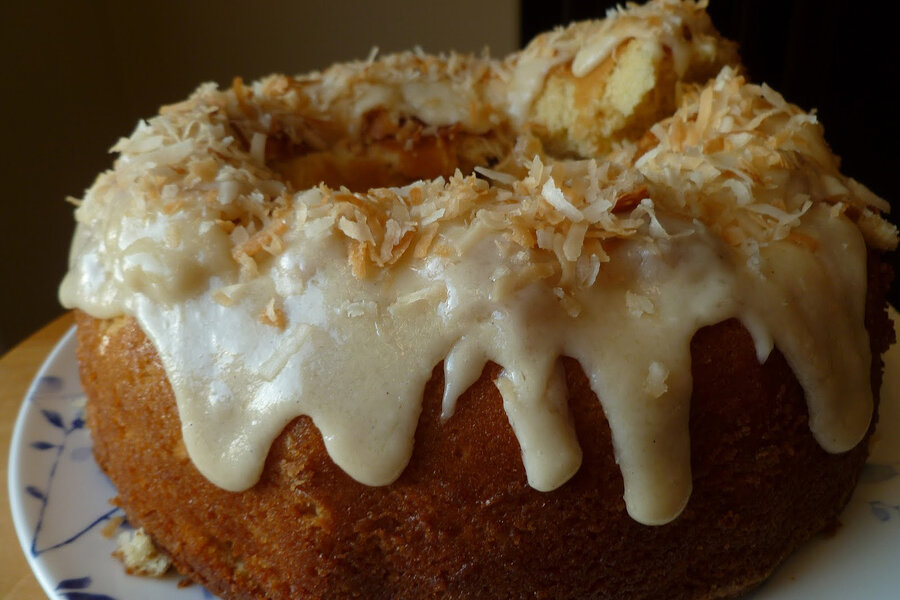By Carol Ramos, The Pastry Chef's Baking
Louisiana crunch cake
3 cups cake flour
1 teaspoon salt
1 teaspoon baking powder
1/2 teaspoon baking soda
2 cups granulated sugar
1 cup butter, softened
4 large eggs, room temperature
1/4 cup sour cream
1 cup buttermilk
2 teaspoons pure vanilla extract
1/4 cup granulated sugar
1/4 cup sweetened flaked coconut
1. Preheat oven to 350 degrees F.
2. Sift together cake flour, salt, baking powder and soda. Set aside.
3. In a large separate bowl, beat butter until very fluffy (about 5 minutes) then add 2 cups of sugar. Continue to beat until light and fluffy (about 2 more minutes).
4. Beat in eggs, one at a time, making sure that each egg is thoroughly blended before adding the next egg.
5. Mix sour cream and vanilla extract together.
6. Add flour mixture and sour cream mixture alternately, beginning and ending with the dry ingredients. Beat until batter is well blended and uniform but do not over-mix.
7. Grease and flour a bundt cake pan. Add in 1/4 cup of sugar to the bottom of pan and about 3 inches up the sides, tapping the pan to ensure even distribution. Leave excess sugar in pan. Sprinkle coconut flakes to the bottom of the pan. Scrape batter into the bundt pan and spread evenly.
8. Bake for about 50 minutes to an hour or until a wooden skewer or cake tester inserted comes out clean.
9. Let cake cool for about 10 minutes, then carefully remove from pan, making sure that the sugary coconut side is faced upward. Use a knife to scrape the sides if cake becomes stuck. (This step is very important otherwise your cake will continue to bake and will become very dry and completely stuck in the pan).
10. Drizzle glaze over the crunchy top portion of cake. Top with toasted coconut if desired.
See the full post on Stir It Up!








